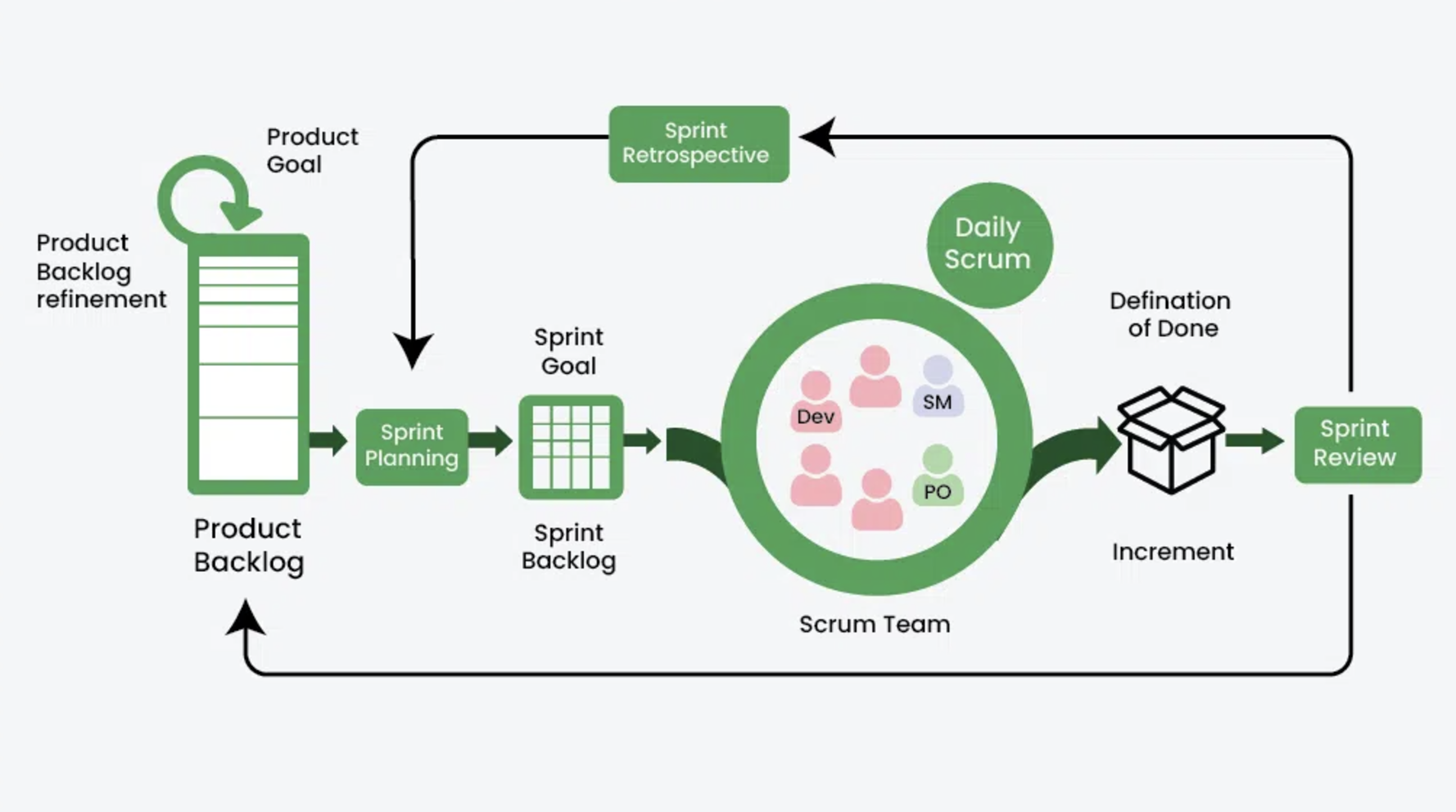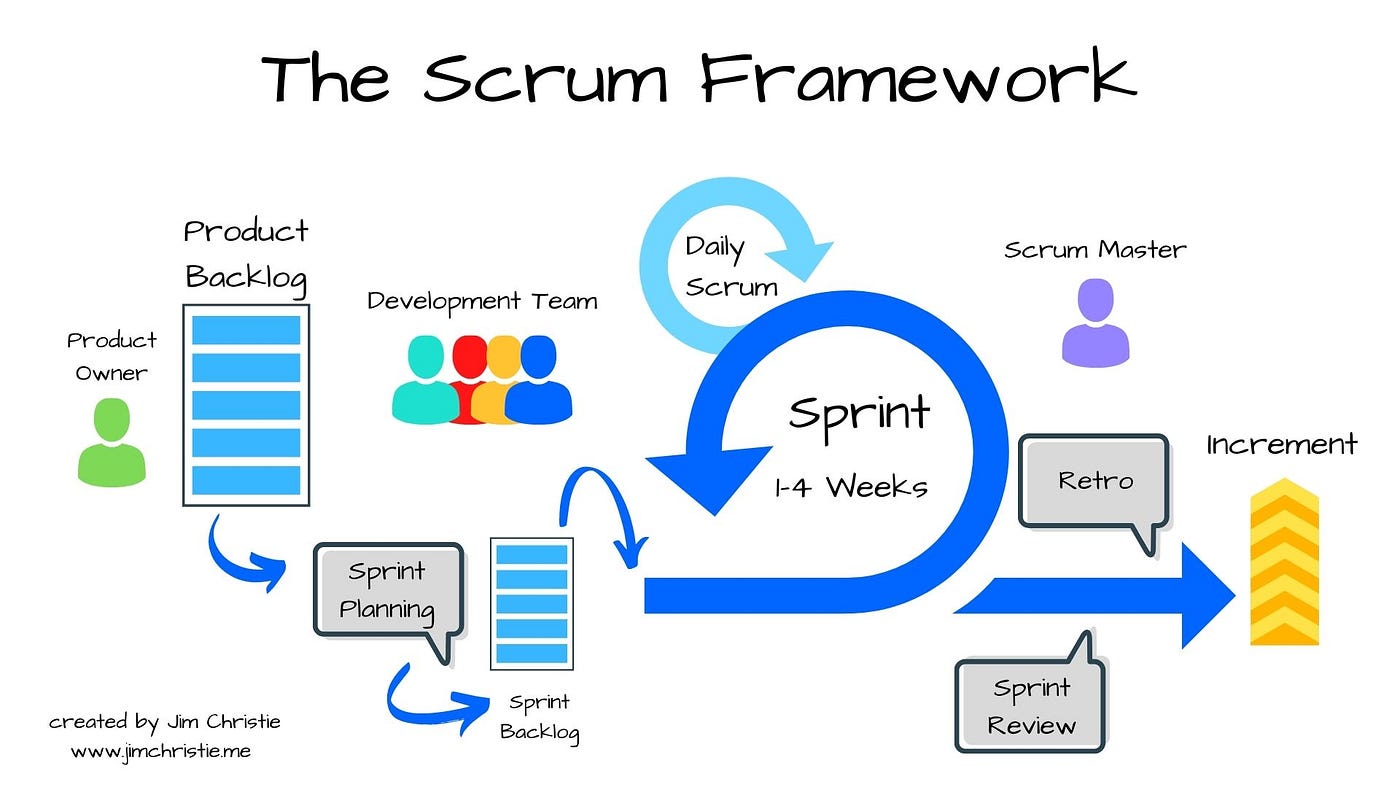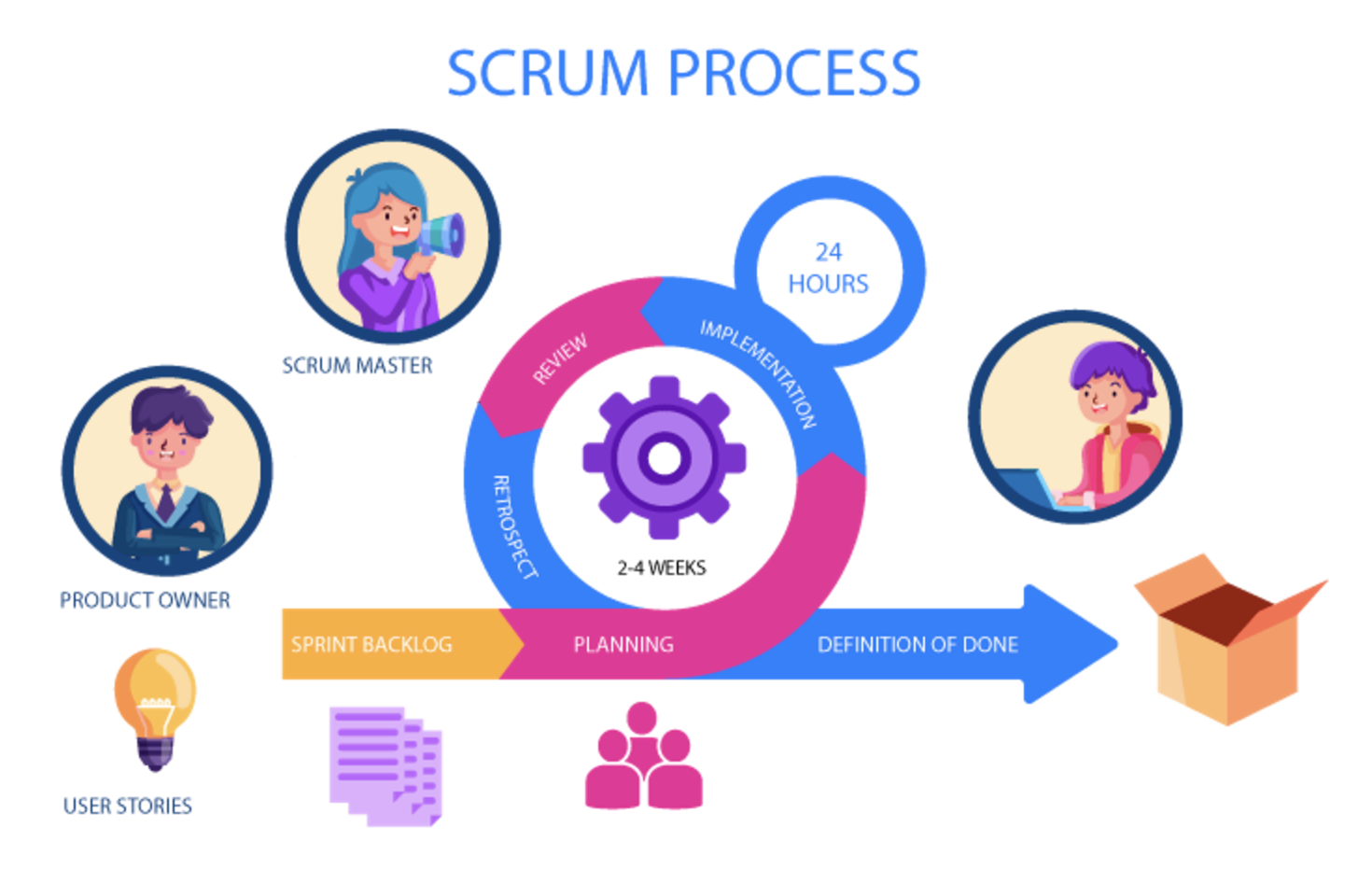Scrum is a simple yet powerful framework within Agile approach that helps teams work together efficiently to achieve their goals. It breaks work into small, manageable tasks, encourages collaboration, and adapts quickly to changes, making it ideal for delivering high-quality results in any field.
Scrum is one of the most popular and widely used frameworks under the Agile umbrella. Known for its simplicity and effectiveness, Scrum enables teams to deliver value incrementally while maintaining high adaptability to changes. This article dives deep into Scrum, covering its origins, framework, roles, ceremonies, artifacts, and advantages.

What is Scrum?
Scrum is a lightweight, iterative framework designed to help teams work together efficiently to solve complex problems and deliver high-value products. It was introduced in the early 1990s by Ken Schwaber and Jeff Sutherland, who later documented its principles in the Scrum Guide. The name “Scrum” is borrowed from rugby, symbolizing the team effort required to achieve a common goal.
Why Scrum?
Scrum is specifically tailored for projects where:
- Requirements are dynamic or unclear at the start.
- Rapid changes or feedback loops are essential.
- High-quality deliverables are required within short timeframes.
Key Features of Scrum
- Empiricism: Decisions are based on observation, experimentation, and experience rather than assumptions.
- Transparency: Progress, goals, and challenges are openly visible to everyone involved.
- Inspection and Adaptation: Regular reviews ensure the product and process are aligned with evolving needs.
Scrum Framework
Scrum is structured around Sprints, which are time-boxed iterations (usually 1-4 weeks). Each Sprint delivers a potentially shippable product increment. The Scrum framework is defined by its roles, ceremonies, and artifacts.
Scrum Roles
Scrum divides responsibilities into three distinct roles to ensure accountability and focus:
- Product Owner (PO):
- Represents the customer and stakeholders.
- Manages the Product Backlog, prioritizing tasks based on business value.
- Ensures the team delivers value by clarifying requirements and goals.
- Scrum Master:
- Acts as a servant-leader and facilitator for the team.
- Removes impediments and ensures adherence to Scrum principles.
- Coaches the team to continuously improve.
- Development Team:
- A cross-functional group responsible for delivering the product increment.
- Collaborates to plan, design, develop, test, and deliver within each Sprint.
- Self-organizing and empowered to make decisions.

Scrum Ceremonies
Scrum incorporates specific ceremonies to foster collaboration and structure.
- Sprint Planning:
- Objective: Define the Sprint Goal and select items from the Product Backlog to work on.
- Outcome: A detailed Sprint Backlog outlining tasks and objectives.
- Daily Scrum (Stand-up):
- Duration: 15 minutes.
- Objective: Synchronize team efforts and identify roadblocks.
- Key Questions:
- What did I accomplish yesterday?
- What will I work on today?
- Are there any impediments?
- Sprint Review:
- Objective: Demonstrate the completed increment to stakeholders.
- Outcome: Gather feedback and adjust priorities for upcoming work.
- Sprint Retrospective:
- Objective: Reflect on the Sprint process and identify improvements.
- Focus Areas:
- What went well?
- What didn’t go well?
- What can we improve?
- Sprint:
- The core of Scrum, lasting 1-4 weeks.
- Produces a Done, potentially shippable product increment.
Scrum Artifacts
Artifacts in Scrum provide transparency and guide the team toward their goals.
- Product Backlog:
- A prioritized list of features, enhancements, fixes, and tasks.
- Owned and managed by the Product Owner.
- Continuously refined through Backlog Grooming.
- Sprint Backlog:
- A subset of the Product Backlog selected for the current Sprint.
- Includes a breakdown of tasks required to achieve the Sprint Goal.
- Increment:
- The tangible outcome of a Sprint.
- Must meet the Definition of Done (DoD), ensuring quality and usability.
- Burndown Chart:
- Tracks progress by visualizing remaining work in the Sprint.

Advantages of Scrum
- Enhanced Collaboration:
- Regular meetings and open communication ensure alignment among team members and stakeholders.
- Increased Adaptability:
- Teams can pivot quickly in response to changing requirements or feedback.
- Continuous Improvement:
- Retrospectives enable teams to refine their processes Sprint by Sprint.
- High Transparency:
- Stakeholders have visibility into progress and can provide timely feedback.
- Faster Time-to-Market:
- Incremental delivery ensures that usable features reach users sooner.
- Focus on Value:
- Prioritization ensures the most valuable tasks are addressed first.
Challenges in Scrum
While Scrum offers numerous benefits, its success relies on proper implementation and commitment:
- Misaligned Roles: Confusion about responsibilities can lead to inefficiencies.
- Resistance to Change: Teams accustomed to traditional methods may struggle initially.
- Over-Commitment: Trying to do too much within a Sprint can lead to burnout or unmet goals.
- Inconsistent Stakeholder Involvement: Lack of engagement can hinder progress.
- Misinterpreting Agile Flexibility: Flexibility in Scrum does not mean lack of structure.
When to Use Scrum
Scrum is ideal for:
- Projects with evolving or unclear requirements.
- Teams seeking high collaboration and frequent feedback.
- Products requiring iterative development.
However, Scrum might not be suitable for projects with highly stable requirements or rigid deadlines where traditional approaches may be more effective.
Conclusion
Scrum is a powerful framework that has transformed how teams approach complex projects. By fostering collaboration, adaptability, and incremental delivery, Scrum enables organizations to deliver high-quality products while continuously learning and improving. When implemented effectively, Scrum not only enhances team performance but also delivers significant value to customers and stakeholders.
Whether you’re just starting with Agile or looking to refine your current practices, adopting Scrum can be a game-changer in your journey toward excellence.